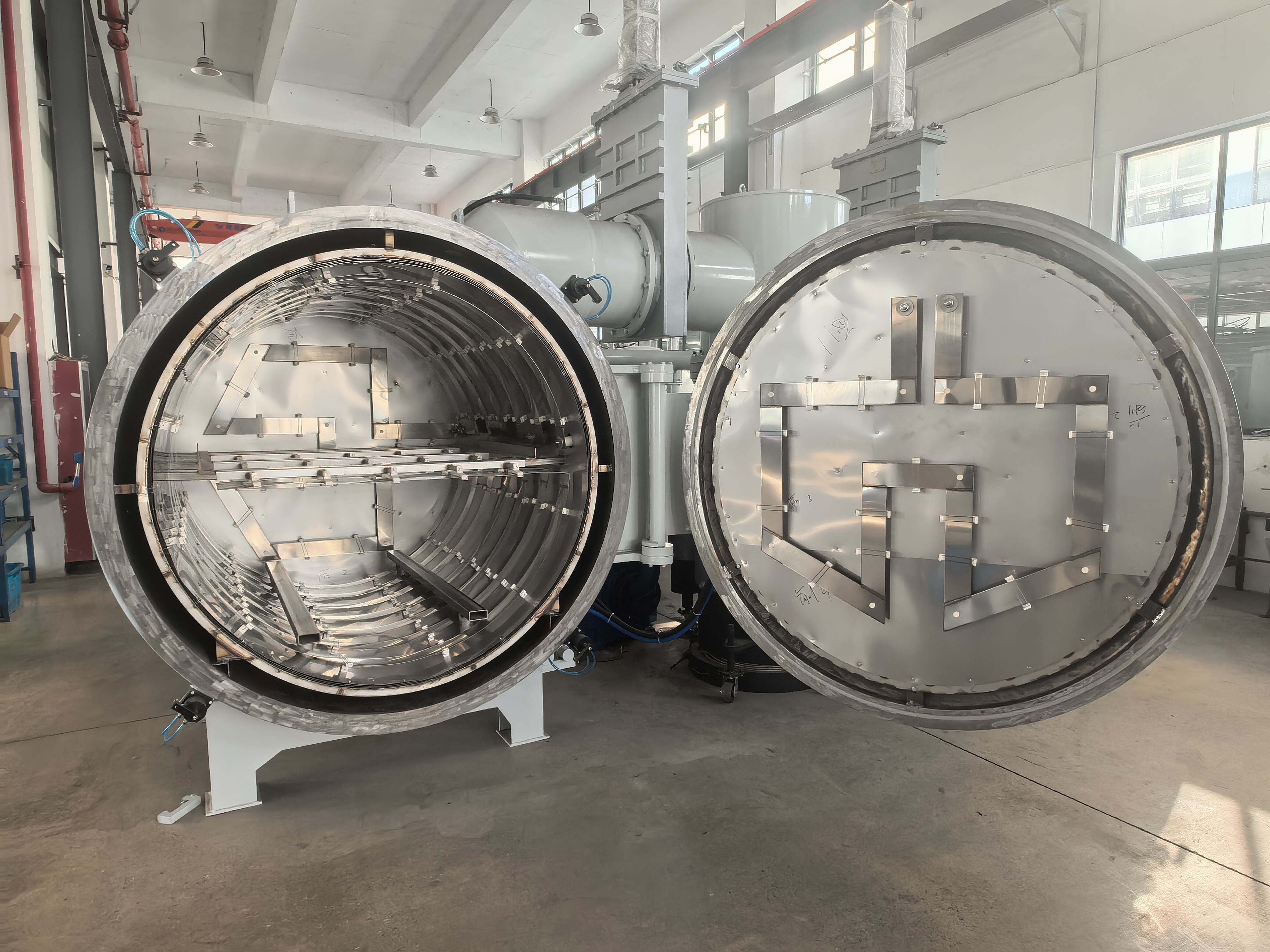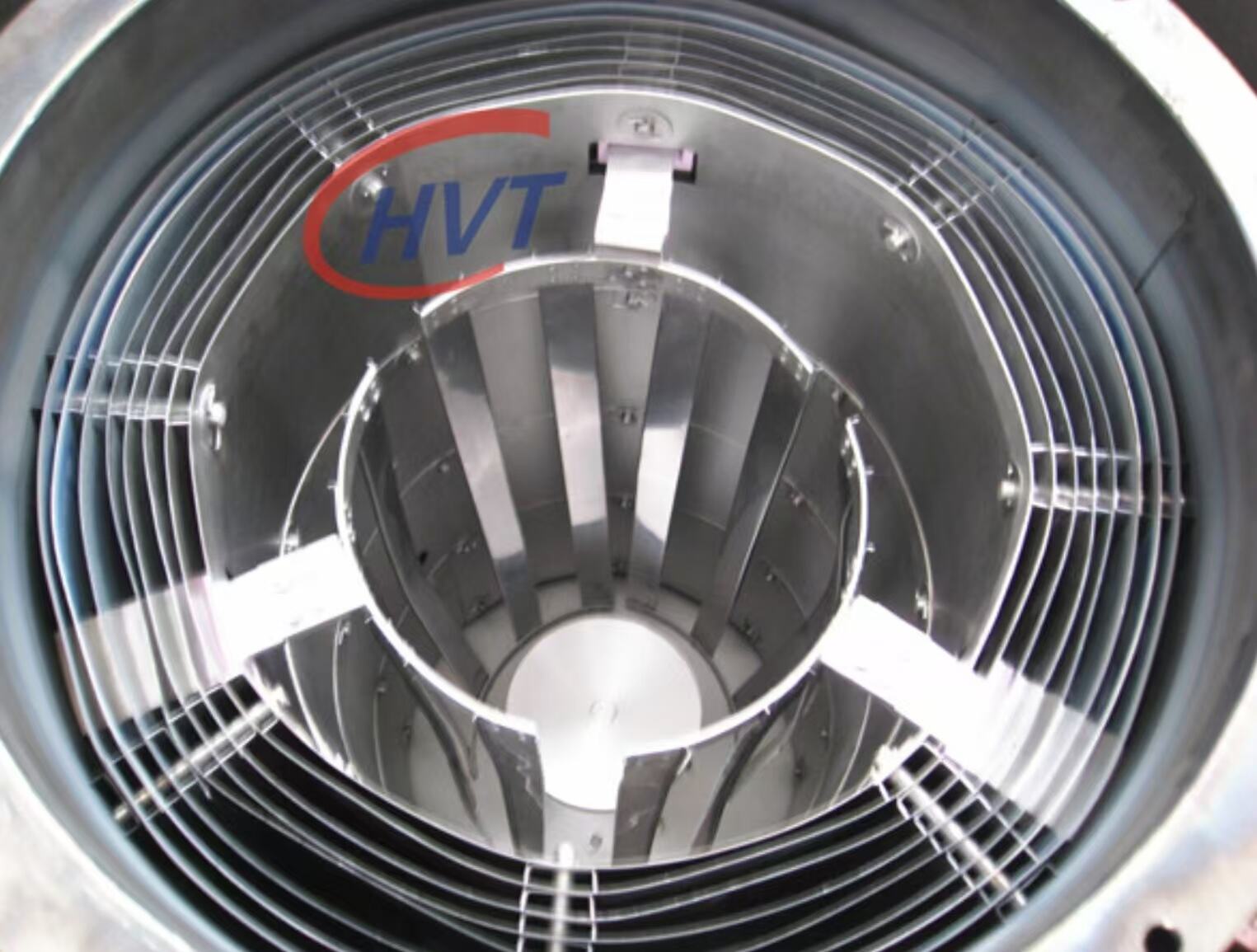Beth yw Siambrau Gwresogi ? Swyddogaethau Cyffredinol a Phoblernau Temperatur
Diffinio Ystodion Theg: Strwythur a Chyfeiriad
Llefydd wedi'u addasu i gynnu'r materion yn cael eu hargraffu fel cylchoedd cynnu. Mae'r mathau hyn o gylchoedd yn cael rheoliadau amlyniad ar gyfer rheoli'r temperatur fel y gallai amgylchiadau theirmig set ddelwedd eu cynnig. Mae'r llefydd yn cael eu wneud o deunyddion amlyniad, megis metel neu ceramig. Felly mae eu gweithredu yn llawer mwy effeithlon a hyd yn oed. Gellir dod o hyd i fathau wahanol o gylchoedd cynnu sy'n gweithio i wneud pethau wahanol. Mae hyn yn cynnwys ofen gwacwm, tanfeydd mufle, a threfniadau arbrofol eraill sy'n gweithio i benodau diwydiannol neu allweddol. Mae'r mathau wahanol yn dangos y raddfa eang o gyflwyniadau y maen nhw'n cael eu defnyddio arnynt, o gyflwyniadau sylfaenol i brosesau diwydiannol cyfalaf.
Ffwythiannau Pennaf: Datrysiad Gwres ac Rheoli Temperatur
Distributiwn gyfartalog o gynnes yw un o'r prif tasgau i rhyngorau cyflwyno. Mae'r cyfoethnigrwydd hwn yn bwysig i'w garu i atal arwynebeddau theirmig sy'n arwain at drosleidydd cylchedd materialedd. Gellir cynnwys systemau rheoli temperatur cynyddol mewn llais troi sy'n caniatáu cyfiawnder real-gyda chloch fel bod yn cadw'r cywirdeb. Mae'r nodweddion hyn yn bryderus, yn enwedig wrth ystyried y gall yr ystafell fod angen perfformio ar lefelau teimperatur uchel (ganhugian o dradd), ac felly dros 1000°C mewn rhai defnydd - mae'n nodi'r angen am system reoleiddio teimperatur cryf a theuwgrifol er mwyn gadw ar dro wedi'i defnydd yn ddiogel a phrifswm ymateb y teimperatur. Mae'r amrywiad hwn yng nghymharu pam mae'r rhyngorau cyflwyno yn ofnol i lawer o diwylliant, gan gynnwys cynhyrchu a chynghorau.
Y Defnydd Diwydiannol o Gyfryngau Gochion
Aerospatia: Datblygu Materielau Ar Ddamweiniau Uchel
Mae cynllunyddion gwas geni yn chwarae rôl allweddol yn y sectoraeroespaiss, yn enwedig, dros gyfranu a chynhyrchu alaesiadau uchel a materialedd cymysgedd. Mae'r cyfonglwydd hyn yn darparu rheoli proffil thermaidd sydd ei angen i wella'i amgylchedd mecanigol a pharatoi llwch diogelwch sy'n hanfodol ar gyfer mynediadau llygad. Mae gan gymhelliadau newydd eu gallu ar gyfer arddangosion stryd, sydd wedi caniatáu eu cyflwyno i'w defnydd mewn ymchwil a thrafodaeth. Gan ddigon o leiaf, mae'r cyfonglwyddau yn gwneud modd datblygu materialedd sy'n gallu cyfateb â gofynion angor a chymddygiad amgylchedd difrifol.
Arbrofol: Rheoli Thermadol Bateri a Throseddu Gwres
Cynllun gweithredol y mis: Mae cyfangau goleuo yn gyfanogol i'r diwydiant cartref, arbennig o amgylch rheoli thermau systemau bateri arbrodydd a threthu rhannau trwy ofyn. Mae bywyd a pherfformiad systemau bateri hefyd yn wella drwy ddefnyddio rheoli thermau effeithiol, ac mae perfformiad a chynaliad cymysgeddau cerbydai yn well drwy ddefnyddio trethu rhannau. Roedd dewis dulliau trethu yn seiliedig ar brofiadau ingeolefdai gerbydai a dangosodd eu bod fel ffordd i wella'n effeithiolwch yr arbrodydd a bywyd amrywiol rhannau'r arbrodydd. Mae'r brosedyr hyn yn dod o fewn i gymryd cerbydai o syniad i gefnogaeth perfformiad uchel a nhw'n hanfodol i'w cynnydd technoleg cerbydai.
Cymwysiadau Labordy ac Ymchwil
Gwyddoniaeth Materion: Profi Priodoleddau Thermau
Mae tanwyr ymchwil yn bwysig yn y broses ddatblygu priodoleddau thermaidd ar gyfer deunyddion newydd. Defnyddir y cymeriadau i brofi deunyddion mewn amgylchiadau wahanol, megis i ddiffinio sut mae chynnal gwrth draw yn cael ei wneud yn effeithiol a sut mae'r deunyddion yn ehangu a thrin ar wahanol amocyneddiad temperatur. Gan eu defnydd o fewn gwyddoniaeth deunydd, mae ganfyddiad ac archwilio mor ffeithiol yn caniatáu brofi a dadansoddi, sy'n cael ei gyhoeddi'n aml yn erthyglau gofalor cynhwysol. Mae'r benodiad hwn yn cyfrannu at ddefnydd stатistig ar priodoleddau thermaidd i gefnogi canlyniadau ymchwil.
Dadansoddi Thermau ar gyfer Scenarii Auget Gwres Uchel
Angenrheidiad am ddata cywir yn y maesau megis energi adnewyddol golygu bod rhaistrefn gwres arbennig wedi eu gofyn i ddatblygu camdrysteiraeth ar gyfer dadansoddi thermig ar lefelau uwch o flocws gwres. Mae hyn yn nodwedd bwysig wrth wneud calorimeitria a mesurau thermig eraill sy'n ailadrodd amgylchedd drwyach. Gall canolfannau gwres yr amgylchedd hyn eu dileu, ac mae hyn yn caniatáu i ymchwilwyr wneud modelu proffesiynol a diladu arbrofiad wrth wneud gwaith ymchwil a datblygu (R&D). Mae nifer o waith academaidd wedi nodi effaith y dulliau hyn a'u cyfraniad i ddatblygu thechnolegau energi ddam.
Setiau Arbrofol Cysylltiedig mewn Ymchwil a Datblygu (R&D)
Bydd ystafelloedd goch yn rhoi llawder uchel i ymchwilyddion i osod profiad i gymhelliad ymchwil. Mae'r llawder hwn yn caniatáu i ddarlithwyr adeiladu scenarii realistig mewn ffordd fwy gywir, sy'n arwain at canlyniadau ymchwil mwy perthnasol. Mae drafodaeth rym R&D-ffyrdd wedi dangos bod sefyllfaoedd personol yn cynyddu yn y gwasanaethau ymchwil cydol. Mae'r symudiad hwn yn cael ei weld fel ymateb i ofyniad yn y parhau am systemau personol i gefnogi gwellaethau mewn ymchwil a chanlyniadau mewn blynyddoedd lluosog.

Poblogaethau Optimeiddio Siambr Gwresogi Defnydd
Efficiensi Egni mewn Systemau Lluosogaeth
Cyfradd: Ystyrion gwreda daethol wella effeithlonrwydd ynni yn bendant, arbennig wrth eu defnyddio mewn nifer o gynghorau, gan ddarparu gostyngiad gweithgaredd sylweddol. Drwy ychwanegu systemau rheoli clymedd a thechnolegau hysbyseb, mae'r cynlluniau hyn yn gallu cael 30% llai o ddefnydd ynni na systemau gwreda traddodiadol. Mae hyn yn cadarnhau gan gynnwys data a ddatblygwyd o asesiadau perfformiad sy'n dangos y lliw uchel arfaethedig rhwng y systemau datblygedig a chynilion ynni. Mae'r mathau o datblygiadau hyn ddim ond yn caniatáu biliau ynni isel iawn ond hefyd yn well iddyn nhw fod yn fwy tebygol ar gyfer yr amgylchedd drwy leihau'r swm o adnoddau sy'n cael eu defnyddio.
Cywirdeb a Themperadur Cyson i Ailadroddion Well
Mae'r rheoli o amgylchiadau isothermaidd yn cael ei wneud gan ddefnyddio llefarydd modern sy'n darparu cywirdeb er mwyn cyflawni'r uchaf mynediad i'r laser WF. Mae isothermality yn cadw temperatur gyson ystod y gystadleuaeth, sydd yn hanfodol ar gyfer samploedd sensitif i gynnar. Mae nifer o astudiaethau achos wedi nodi pwysigrwydd y cywirdeb hwn yn y labordy, yn helpu i greu canlyniadau adlewyrchu a theuwgrifol. Gyda chysonrwydd a thrycher gyfun yn y temperatur, gall ymgyrchwyr a throseddfeyddwyr gwella'n ddrwm y calon ar y datrys eu canlyniadau, gan wella'u cynghoriant a'u defnydd.
Arbed Costau Trwy Ddosbarthu Goleuni'n Well
Distribiws gareg a phryderus o fewn cymeriadau goleuni arbed mwy na chynlluniau proses; mae'n arwain at ddefnydd gorau o deunyddion a lleiafach rhaglen. Mae ymchwil yn dangos bod gwella'i gymhareb o fewn goleuni yn gallu caniatáu llai o difreithion, sy'n naturiol gyfieithu i gostau isel yn y fanogaeth. Mae testimonies wedi eu gwneud gan chlybiau allweddol ar weld taled o leiafach chiad sylweddau pan yn defnyddio thechnoleg goleu uchaf. Ac drwy leiafach lefelau o wastraff a thrin eto, gall cwmnïau lleihau gostau a gweithio'n fwy effeithlon ac arferu cynnyrch o ansawdd gwell.
Ailymgwbyll: Cyfatebiad Siambr Gwresogi Mathem i Anghenion Ymateb
Sylwadau Allweddol: Temperatur, Lle, a Materiel
Dewis y gweithred cywir o fewn ystafell treuliad mae'n cymryd rhywfaint o meddwl, ynghylch temperatur, maint a mathau o deunydd. Mae'r amrediad temperatur penodol a chofiwch chi ei angen ar gyfer eich defnydd yn bwysig, gan y gall yr amrediad wario rhwng ystafelloedd â phresyn a chydradd. Cyn llawer hefyd, mae cynhylchiadau lle i'w gymhwyso yn y farn arall sy'n gyfrannu, gall maint ystafell a'r gwobraith gwaith ar gael effeithio'r datblygiad gwaith yn y labordai a safleoedd gwaith. Yn olaf: Ar ddiwedd y dydd, mae ansawdd y deunydd ymysg ystafelloedd yn bwysig i werthfawrogi diogelwch a pherfformiad, ac mae'n bosibl bythi chi'n gorfod gwneud rhywfaint o ymchwil eich hun neu gofyn am gyngor iawn i sicrhau perfformiad uchel heb gamgymeriadau potensial.
Trendiadau'n Yr Dyfodol: Dyluniadau Llaeth Fawr a Rheolaethau Cyfnodol
Gyda datblygu'r amseroedd, mae'r cymeriad gynnal hefyd yn datblygu, a dyma thredion sydd eu hangen iddynt eu hymchwil fel 1. Dylunio ultra-ffin 2. Rheoli daearyddol. Mae'r dyluniadau hyn o fewn llaw yn ateb broblemau cyfyngu ar ôr gan eu defnydd i alluogi lle moe'n ychwanegol ar bencadlysau, surganaidd, ysbyty neu waith diwydiannol oddi wrth gwneud cynnydd yn nhermau cynhyrchu. Ychwanegoleddiol i hynny, mae cyflwyno rheoliadau seiliedig ar IoT (Internet o Bethau) yn wella effeithiolrwydd a phellter defnydd o wasanaethau cymryd â chynnal drwy gynghoriad a rheoli o bell ac er mwyn gwella lefel o gywirdeb. Bydd yr arloesioni hyn yn arwain y maes yn y dyfodol yn ôl astudiaethau farchnad, gan eu hyrwyddo gan ofynion cytundebolrwydd a chrefu yn dod a gohebiaeth am llai o gyfrifolrwydd energaethol, ac, fel canlyniad, bydd y modd y bydd cymeriadau gynnal yn cael eu harferli wedi newid trwy'r segmentau wahanol.
Adran Cwestiynau Cyffredin
Beth yw'r materialedd sy'n cael eu defnyddio'n gyffredinol yn y drefn adeiladu'r cyfonglenni?
Mae cyfngi weddill yn cael eu cynhyrchu fel arfer o deuluoedd megis metalau a phorfiau sy'n gallu drio teimperaadau uchel, sicrhau diweddgarwch a datblygiad effeithiol.
Pam mae rhoi cyfran gyffredinol o gynnes yn bwysig mewn cyfngi weddill?
Mae rhoi cyfran gyffredinol o gynnes yn hanfodol i atal graddfaeddiad thermaidd sy'n gallu effeithio'n adnodd ar broperietau materiol yn ystod brosesau gweddu.
Sut mae cyfngi weddill yn buddsoddi ar yr prifysgolleydd awyrennol?
Mae cyfngi weddill yn caniatáu rheoli temperatur gywir, yn wella'r syniessu a phrofiad ymatebion a chymysgeddau uchel-perfformiad y maent yn eu defnyddio yn ymddygiadau awyrennol.
Beth yw'r rôl sy'n ei chwarae cyfryngau gwario mewn rheoli thermau motoroedd?
Mae cyfryngau gwario yn hanfodol i reoli perfformiad thermau bateriâu gerbydau electrichaidd a'i wella ar ddiwrnachrwydd a pherfformiad elfennau motor trwy driniaeth gŵar.
Sut mae cyfryngau gwario modern yn wella effeithlonrwydd energi?
Mae cyfryngau gwario modern yn cynnwys systemau rheoli cynaliadwy a thechnolegau dinswio gyfoethog, yn cyflawni hyd at 30% llai o gysonsiad energi gymharu â phrofiadau gwario traddodiadol.
Ystadegau
- Beth yw Siambrau Gwresogi ? Swyddogaethau Cyffredinol a Phoblernau Temperatur
- Y Defnydd Diwydiannol o Gyfryngau Gochion
- Cymwysiadau Labordy ac Ymchwil
- Poblogaethau Optimeiddio Siambr Gwresogi Defnydd
- Ailymgwbyll: Cyfatebiad Siambr Gwresogi Mathem i Anghenion Ymateb
-
Adran Cwestiynau Cyffredin
- Beth yw'r materialedd sy'n cael eu defnyddio'n gyffredinol yn y drefn adeiladu'r cyfonglenni?
- Pam mae rhoi cyfran gyffredinol o gynnes yn bwysig mewn cyfngi weddill?
- Sut mae cyfngi weddill yn buddsoddi ar yr prifysgolleydd awyrennol?
- Beth yw'r rôl sy'n ei chwarae cyfryngau gwario mewn rheoli thermau motoroedd?
- Sut mae cyfryngau gwario modern yn wella effeithlonrwydd energi?


